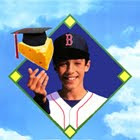
Hi Folks. Just here to say good-bye. Nice knowing you, 2010. You fought (somewhat) admirably... at times. Other times you f*cking trotted Daniel Nava and Bill Hall out there and called this a f*cking team. Oh, and let's not forget John Lackey and his stellar 13-11 wicked high ERA and WHIP and SUCK factor to go along with all the millions they tossed his way. It's ok though. No bitterness here. Maybe only against the bullpen that blew more saves than... ok. I'm not stooping to that level of blow jokes. I need some time to collect my thoughts.







1 comment:
The S, T, and ST scales are used for trig capabilities and multiples of trig functions, for angles in levels.
For angles from around five.7 up to 90 degrees, sines are identified by comparing the S scale with C. The S scale has a second set of angles (sometimes in a various color), which run inside the opposite direction, and are utilized for cosines. Tangents are identified by comparing the T scale with C or, for angles greater than 45 levels, CI. Common forms for example ksinx may be read directly from x on the S scale to the result on the D scale, when the C-scale index is set at k. For angles below five.7 degrees, sines, tangents, and radians are approximately equal, and are discovered on the ST or SRT (sines, radians, and tangents) scale, or simply divided by 57.3 degrees/radian Inverse trigonometric capabilities are identified by reversing the procedure.
Several slide rules have S, T, and ST scales marked with degrees and minutes. So-called decitrig models use decimal fractions of degrees instead.
http://cid-67a0b20d96e0dd7c.spaces.live.com/blog/cns!67A0B20D96E0DD7C!109.entry
http://knol.google.com/k/anonymous/-/d5yuyht8hx89/4
http://www.gather.com/viewArticle.action?articleId=281474978258642
http://quizilla.teennick.com/stories/15877837/dont-get-stuck-with-a-bad-web-hosting-company
http://cid-7de1266b0744dc80.spaces.live.com/blog/cns!7DE1266B0744DC80!111.entry
Post a Comment